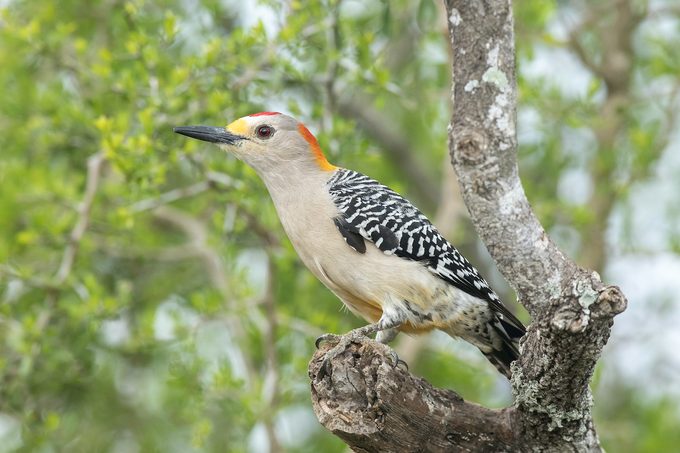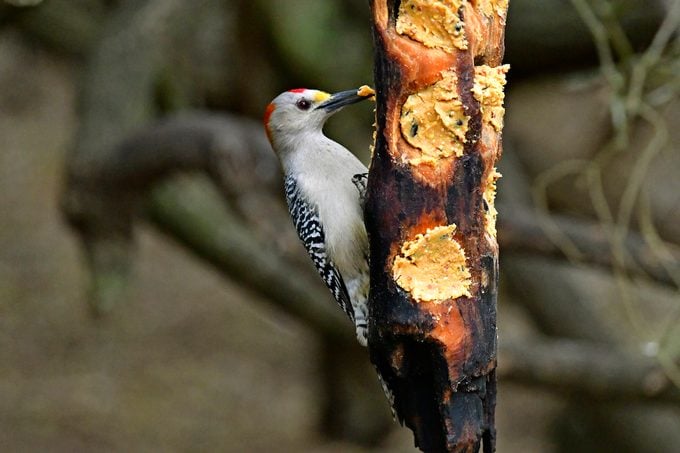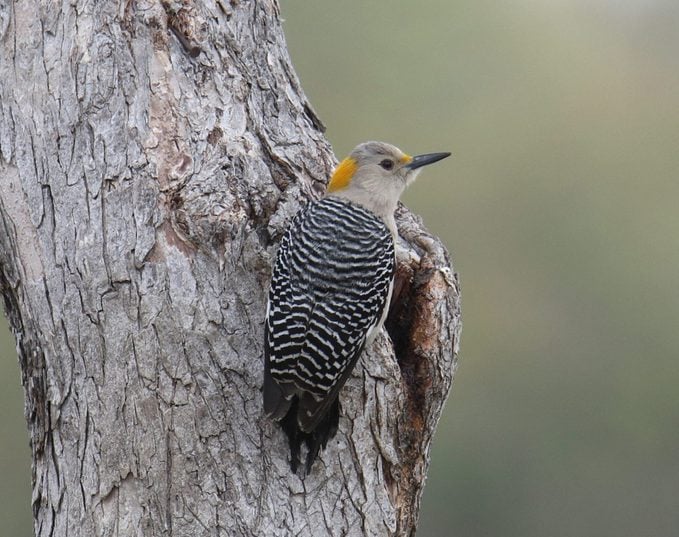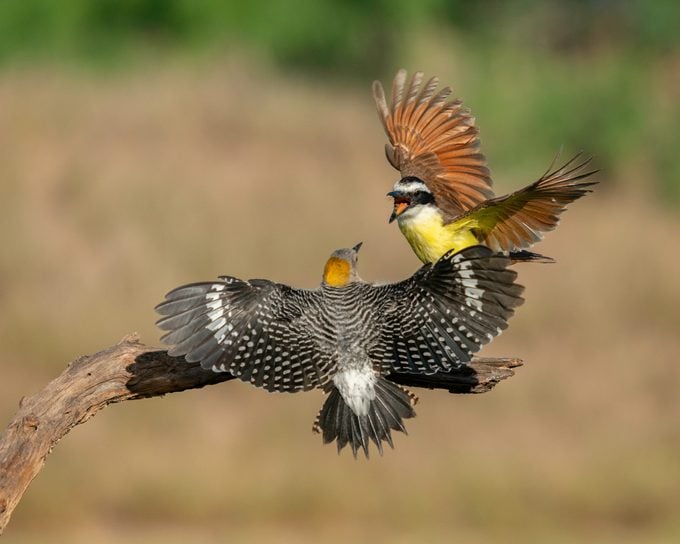Meet the Gorgeous Golden-Fronted Woodpecker
Updated: Sep. 19, 2023
At first glance you might think a golden-fronted woodpecker is a red-bellied. Here's what makes this woodpecker unique—and where to find it.
What Does a Golden-Fronted Woodpecker Look Like?

Unlike the red-bellied woodpecker, the golden-fronted woodpecker has a clear reason behind its name. One glance at the bird, you’ll spot the gold feathers along the upper part of its beak, and a burst of yellow orange on the back of its head. Males sport red feathers at the crown of their heads, which females lack.
While some might find the golden-fronted woodpecker difficult to tell apart from the red-bellied woodpecker, the surest way to identify it is to look at its head. Red-bellieds feature bright red coloring on the backs of their heads, which you won’t see on golden-fronteds. A glance at the lower belly will also reveal golden feathers, in the case of a golden-fronted, or red feathers, in the case of a red-bellied. However, this field mark can be tricky to spot.
These are the 13 types of woodpeckers birders should know.
Range and Habitat
To spot a golden-fronted woodpecker, you’ll need to head south—to Texas, to be exact. The majority of the bird’s range in the United States stretches through central Texas, although a small portion of the woodpecker’s range extends into Oklahoma. It is nonmigratory and can be seen throughout the year. Four distinct subspecies fall under the category of “golden-fronted woodpecker,” but only the “northern” bird appears in the United States. The rest appear farther south.
Birders can find golden-fronted woodpeckers in a variety of habitats. It wouldn’t be unusual to see them dry, open forested areas, but they’ll appear in urban areas as well.
Downy vs hairy woodpecker: Here’s how to tell the difference.
Golden-Fronted Woodpecker Diet

As with many woodpecker species, golden-fronted woodpeckers eat a plethora of insects, including spiders, beetles, and ants. They’ll also eat berries and cactus fruit, and nuts, such as acorns and pecans. In winter, they’re often seen feeding on the ground.
Golden-fronted woodpeckers will stop by backyard feeders for any of their favorite foods; try serving sunflower seeds, suet or peanuts to draw them in.
Meet the sapsucker birds: woodpeckers with a sweet tooth.
Nesting Habits

These birds are cavity nesters, but they do the work of creating that cavity for themselves. Typically, the nest is located anywhere from 6 to 20 feet off the ground. The female lays a clutch of four to seven eggs, which take about two weeks to hatch. The young birds remain in the nest for about a month. After the young have fledged, the female might have a second brood during nesting season.
What does a baby woodpecker look like?
Calls

It can be difficult to distinguish between a red-bellied and a golden-fronted based on calls alone. Many of the chirps and trills made by a golden-fronted woodpecker sound almost identical to those of the red-bellied, albeit louder. Listen for a high-pitched trill, as well as a repeated, squeaky-sounding chuh-chuh-chuh.
Next, learn how to identify the unique and beautiful northern flicker.




















